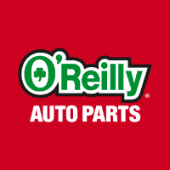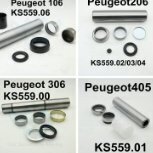-
Welcome to Auto Parts Forum
Whether you are a veteran automotive parts guru or just someone looking for some quick auto parts advice, register today and start a new topic in our forum. Registration is free and you can even sign up with social network platforms such as Facebook, X, and LinkedIn.
How To: Replace the Rear Shocks on a 2006-2011 Honda Civic
-
Similar Content
-
- 0 replies
- 53 views
-
- 0 replies
- 64 views
-
- 0 replies
- 103 views
-
- 0 replies
- 92 views
-
- 0 replies
- 89 views
-
-
Similar Topics
-
By austinbearing
Hello, everyone.We are an auto bearing manufacturer from China.
We produce Peugeot, Renault, Fiat and some other aut bearings.
Contact me if you're interested.
WhatsApp: +8613775640157
E-mail: [email protected]
-
By Counterman
f you read automotive articles on a regular basis, you’ve no doubt read about the scientific side of brakes many times. They convert kinetic energy, which is the energy of motion, into heat energy through friction between the brake linings and the drum or rotor. Because of this, brakes get hot…real hot…and dissipating the heat is one of the most critical factors affecting brake operation.
So, would you believe that shock absorbers work off the same scientific basis of converting kinetic energy into heat energy? It’s true, and here’s how it works.
Kinetic energy is the energy of motion. The springs on a vehicle support the weight of it and allow the suspension to move. But what would happen if there were no shock absorbers? Every time you hit a bump, the springs would compress then expand, and do this over and over again until they finally settled down.
If you’ve never experienced the sensation, which is something like rocking on a boat, you’ve likely seen it on a car going down the road. The front or rear goes up and down, up and down, literally “bouncing” down the road. It happens, in this case, not due to the lack of shocks, but due to the fact that they are simply worn out, so for all practical purposes, they may as well not exist.
link hidden, please login to view The springs absorb the kinetic energy from hitting a bump, but since springs are considered elastic objects, the energy is turned into potential energy. And, in the case of a spring, or any elastic object, the potential energy is then released, and the energy output equals the energy input. The spring will return to its original shape. At that point, the momentum of the car body creates kinetic energy, which in turn acts on the spring in the opposite direction. As you can see, this is a vicious circle, and we need shock absorbers to control it.
The job of a shock absorber is therefore to control the kinetic and potential energy of a spring by dampening its movement. Shock absorbers are filled with hydraulic oil, separated between two different chambers. Between the two chambers is a piston and valve assembly. (See Figure 1). The piston is connected to a piston rod which moves in and out of the shock as the suspension moves.
Compression is when the piston rod is forced into the shock; rebound is when the piston rod is pulled back out. The key lies in the valving, which restricts the flow of oil between the two chambers. Forcing the oil through these valves creates friction, which in turn creates heat. Yes, shocks do get hot, and now the shock has turned kinetic energy into heat energy.
Changing the size of these valves changes the amount of force it takes for compression or rebound, which ultimately changes the ride characteristics of the vehicle. This is one of the main reasons there’s a difference in feel between a sports car and a luxury car.
The more restrictive the compression and rebound, the less the suspension spring will move, which provides improved handling and stability characteristics, such as those desired on a sports car, but this also results in a firmer ride. Less restrictive compression and rebound allows greater spring movement and a softer ride, but not as good handling characteristics. There’s always a tradeoff.
The comparison between the compression and rebound forces in a shock absorber is the shock ratio. Many standard shocks have a 50/50 ratio, meaning the compression and rebound forces are equal. Unequal forces one way or the other can have a drastic effect on handling, and one of the best examples to demonstrate this is with some old school drag racing tech. In drag racing, it’s important to shift the weight to the rear of the vehicle to increase traction while launching. One of the ways to attain this is by using 90/10 shock absorbers on the front.
What this means is that of the total compression and rebound forces, 90% of the force is required to compress the shock, but only 10% of the force is required to extend the shock. When launching, the front of the car wants to lift as weight shifts to the rear. With a 90/10 shock, the front will unload easily and allow the weight to shift to the rear. Then, since it takes a much greater force to compress the shock, instead of the car coming right back down and bouncing in the front after hitting the track, the shocks will remain extended with the weight shifted rearward, and slowly settle as the car goes down the track.
It often takes a while and a few different adjustments with shock ratio, both front and rear, to get a drag car suspension properly “tuned” in. By the same token, stock vehicles, either performance or luxury, are engineered to find the best of both worlds in handling versus comfort. So, the next time you talk about shocks to your customer, make it fun and talk a little science.
The post
link hidden, please login to view appeared first on link hidden, please login to view.
link hidden, please login to view -
By pacadile
I trying to find this part to replace it. Please help!
link hidden, please login to view
-
By NAPA
Honestly,
link hidden, please login to view are rarely a topic of discussion around automotive maintenance until something goes wrong. A torn CV boot seems like a minor issue at first, but if the situation is not remedied quickly, more damage will occur. A CV boot keeps lubricating grease from escaping the spinning link hidden, please login to view. Without grease, the CV joint will wear out rapidly. CV boots also protect the CV joint from water, dirt and road debris. For an often-forgotten replacement part, the CV boot performs a pretty critical job. For even more technical insight, check out “ link hidden, please login to view” CV boots aren’t just for front-wheel-drive vehicles either. Any vehicle design that must transmit power to a wheel, while also allowing for suspension movement, might utilize a CV joint. For example, a late-model, rear-wheel-drive
link hidden, please login to view has an independent rear suspension and two CV axles, each with two CV boots. A late-model, front-wheel-drive link hidden, please login to view also has two CV axles and four CV boots. But, in comparison, an all-wheel-drive link hidden, please login to view has four CV axles and a total of eight CV boots. Is It Possible Fix a CV Boot?
If you’re searching for a how-to guide on replacing a damaged CV boot, you came to the right place. Let’s walk through a CV boot replacement with the help of some NAPA expertise. Keep in mind, a CV axle boot replacement is only for
link hidden, please login to view that are still in good shape. If your CV axle is clicking or the CV boot was damaged and leaking grease for an extended length of time, you need to replace the entire CV axle. Installing a new CV boot and applying
link hidden, please login to view won’t fix an already damaged CV joint. Also, the labor to just replace a CV boot is nearly the same or greater than replacing the entire CV axle assembly. If the link hidden, please login to view costs as much as a new or rebuilt CV axle, the smart choice is to replace the entire CV axle. How Long Does It Take to Replace a CV Boot?
The time it takes for CV axle boot replacement varies by vehicle. Most of the labor time involves removing the CV axle from the vehicle. Budget at least an hour for the job if the CV axle is easy to remove or up to three hours if the vehicle is complicated. Cleaning the CV joint can take another 30 minutes as well.
How to Replace a CV Boot
A typical
link hidden, please login to view includes a new CV boot, two CV boot clamps and grease. Replacing a CV boot requires lifting the vehicle off the ground for easier access to the underside. A repair shop or well-outfitted home mechanic will utilize a vehicle lift, while a DIYer can use something as simple as sturdy link hidden, please login to view. Never use a floor jack to support a vehicle, as they can suddenly fail. Lift the vehicle off the ground. Use a wheel chock to prevent any wheels on the ground from rolling. Remove the wheel on the axle that needs repaired. Refer to a repair manual for what steps to follow to access the CV axle. You will likely need to remove the brakes and detach steering and/or suspension components, as well as the axle nut. Remove the CV axle from the vehicle and place it on a workbench with plenty of working space. Cut off the failed rubber CV boot. The metal CV boot clamps will likely require a pair of link hidden, please login to view. Due to the potential mess caused by the CV joint grease, we recommend wearing a pair of disposable work gloves for this step. Refer to your repair manual for how to remove the CV joint from the axle shaft. Note that inner and outer CV joints are possibly different and might require distinct methods of disassembly. Clean the axle shaft to remove any old grease. Use a link hidden, please login to view to clean the CV joint. Let the CV joint dry thoroughly. If using non-split CV boot clamps, slide them over the axle shaft now. Slide the new CV boot onto the axle shaft, taking care to orient it correctly. The large cone opening should face the CV joint. You may need to use a small amount of silicone lubricant to help move the boot along the axle shaft. Refer to your repair manual to link hidden, please login to view using the correct specified grease. Refer to your repair manual to reinstall the CV joint onto the end of the axle shaft. Slide the CV boot over the CV joint, making sure it is seated evenly. Using the link hidden, please login to view, tighten both CV boot clamps. Reinstall the CV axle along with any components that were removed to access the CV axle. Pay attention to torque specifications during reassembly. Reinstall the wheel and tighten the lug nuts to the correct specifications. Lower the vehicle back to the ground. How Much Does It Cost to Replace a CV Boot?
CV boot replacement cost can range from $300 to $900 depending on the vehicle. It is wise to price out replacement of the entire CV axle as well. In some cases, it is smarter to spend a little more money to replace the entire CV axle rather than spend time changing just a CV boot. Check out the
link hidden, please login to view for a better estimate of what this repair would cost for your vehicle (if applicable). Now that you know the typical steps of how to replace a CV boot, you can decide if this repair is something you can tackle yourself. Your local NAPA Auto Parts store can help you find the right CV axle boot repair kit for your application. You can also shop NAPAonline for
link hidden, please login to view on more than 160,000 items! Don’t feel like doing it yourself or don’t have the time? The link hidden, please login to view at your local link hidden, please login to view have you covered with more than 17,000 locations nationwide. Photo courtesy of
link hidden, please login to view. The post
link hidden, please login to view appeared first on link hidden, please login to view.
link hidden, please login to view
-






Recommended Posts
Join the conversation
You can post now and register later. If you have an account, sign in now to post with your account.
Note: Your post will require moderator approval before it will be visible.